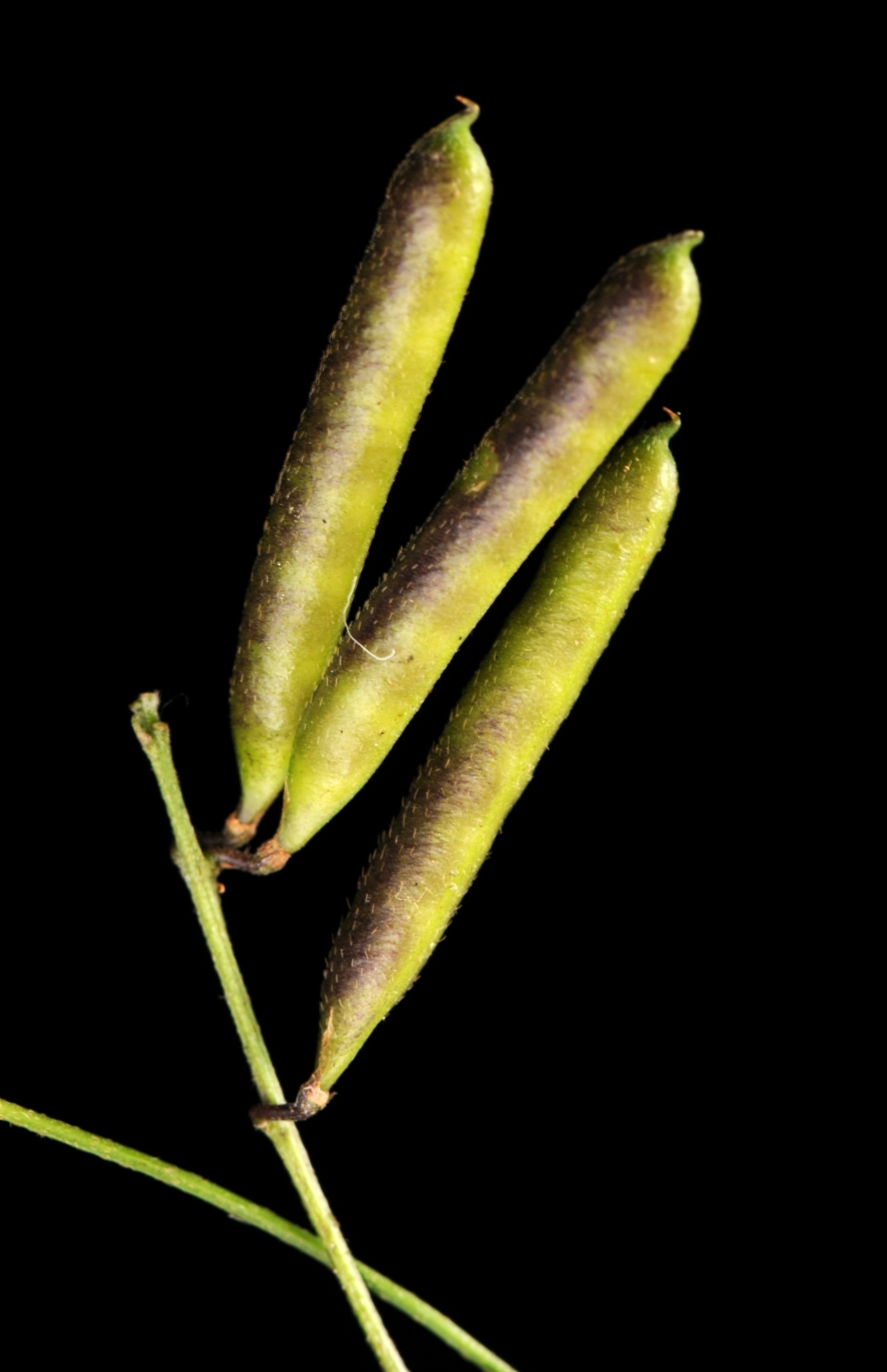Glycine
Perennial herbs; stems slender, climbing or procumbent, sometimes woody at base, pubescent, hairs more or less appressed. Leaves alternate, pinnately or palmately trifoliolate, rarely 5–7-foliolate, terminal leaflet usually largest, some species dimorphic; stipules small; stipellae small, caducous. Inflorescences axillary racemes in fascicles or clusters, rarely inserted singly (single- or few-flowered cleistogamous inflorescences occur in lower leaf axils of most species); flowers small; bracts linear to lanceolate, inserted at the base of each pedicel, caducous; bracteoles small, usually linear, membranous, caducous. Calyx tube tapering to the base, teeth unequal, upper 2 fused for most of their length; petals long-clawed, white, blue or purple-pink; standard more or less orbicular, larger than other petals; wings narrow-obovate, usually adherent to keel; keel obtuse; stamens all fertile, usually diadelphous, upper stamen freeing with age, anthers uniform; ovary subsessile, ovules 2–12; style short, slender, slightly incurved, glabrous. Pod linear or oblong, more or less terete or compressed, straight or falcate, with pithy partitions between seeds, dehiscent; seeds 3–12, ovoid, obloid, subspherical or quadrate; aril scale-like.
About 18 species from eastern Asia to Australia (15 species).
Jeanes, J.A. (1996). Fabaceae. In: Walsh, N.G.; Entwisle, T.J., Flora of Victoria Vol. 3, Dicotyledons Winteraceae to Myrtaceae, pp. 663–829. Inkata Press, Melbourne.
 Spinning
Spinning

